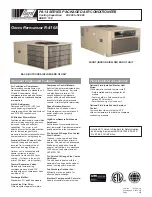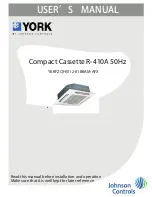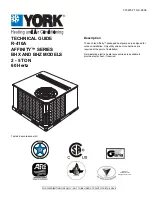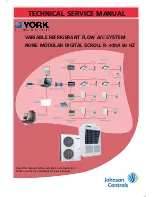
Coil Piping and Connections
58
UNT-SVX07E-EN
able to sense the correct system water temperature,
regardless of the control valve position.
Note:
The maximum length of the automatic changeover
wire cannot exceed ten feet from the control panel.
If the sensor extends beyond the unit chassis, use
shielded conductors to eliminate radio frequency
interference (RFI).
Venting the Hydronic Coil
The hydronic coil contains a vent, either manual or
automatic, to release air from the unit. This vent is not
sufficient for venting the water piping system in the
building.
The coil air vent is on the piping side, above the coil
connections on the unit. See
Figure 30
and
Figure 31
.
Perform the following steps to vent the coil after installing
the unit.
1.
Pressurize the building piping system with water and
vent any trapped air at system vents.
2. For units with manual air vents, back the set screw out
to expel air from the unit and then re-tighten the set
screw.
The automatic air vent should require no adjustment for
the coil to vent. However, if the coil does not vent
immediately, unscrew the outer portion of the fitting to
expel air from the port.
If debris has become trapped in the vent, completely
remove the outer portion of the fitting and clean.
External Insulating Requirements
Insulate and vapor seal surfaces colder than surrounding
air dew-point a to prevent unplanned condensation. Trane
recommends field-insulation of the following areas to
prevent potential condensate problems:
•
Supply and return water piping connections
•
Condensate drain lines and connections
•
Fresh air intake duct connections
•
Discharge duct connections
•
Wall boxes
Balancing Manual Circuit Setter
Valve
The manual circuit setter valve is an optional end valve
supplied on the return pipe of the factory piping package.
The valve allows the operator to regulate water flow
through the hydronic coil, balance the water flow through
the unit with other units in the piping system, and serves
as a shutoff or end valve. See
Figure 32
.
Figure 30.
Manual coil air vent with set screw
Figure 31.
Manual coil air vent with Shrader fitting
Figure 32.
Manual circuit setter valve
Figure 33.
Automatic circuit setter valve
















































